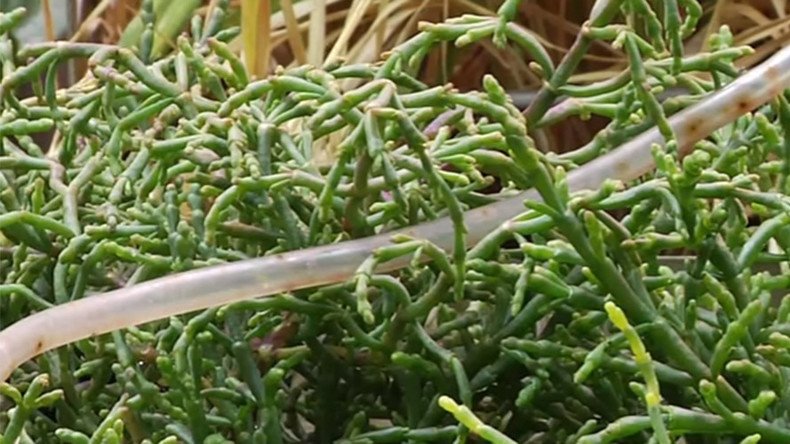Life on Mars? Siberian scientists create ‘micro-Earth’ for humans to live in hostile environment

The BIOS-3 system developed by Siberian scientists may become a new revolution: the self-sustaining “micro-Earth” may make it possible for humans to create oxygen, water, and food in hostile environments… such as on Mars, for instance.
"BIOS-3, or the Biological Support System, is an experiment which was started in the early sixties of the last century. The idea was very simple and consists of an attempt to create a prototype of a future station on a different planet, for example, on the Moon or on Mars, outside the biosphere," Egor Zadereev, Senior Research Scientist at the Institute of Biophysics, told RT.
He added that the longest time spent at BIOS-3 was six months in 1972-1973, saying the system was able to provide 100 percent of the needed oxygen for itself, and from 50 to 80 percent of the food at different stages of the experiment.
Two men and a woman participated in the experiment at the time, they were an agronomist, an engineer and a doctor.
The movie industry touched upon the subject quite a lot, including “The Martian” starring Matt Damon, Zadereev concluded.
“Our scientists went to this movie because it is interesting to comment on whether what was happening on Mars in this film was real or unreal."
The experiment dates back decades ago to during the Cold War in a scientific institute in Siberia 4,000 kilometers from Moscow, in Krasnoyarsk.
Some of the scientists have spent a lot of time at the facility: 74-year-old top engineer Nikolay Bugreyev was inside the BIOS-3 for 13 months in total and was nicknamed the “Siberian Martian.”
“I lived in this compartment. It's really small but it was enough, it's just 5 square metres. There was a table, a bed, a shelf for clothes, and that was it, you don't really need anything else,” he told the Siberian Times.
“You could see outside of the round window, there were colleagues walking there, researchers, they were waving to us. But we couldn't really speak because you couldn't hear anything through the walls. We used a special phone if there was need. Relatives would visit at the weekends,” he added.
Research and experiments took all day, though there was little time to miss the loved ones. During the night, the “bionauts” were monitored by doctors during the night via wires, but there have never been any health issues, ever, the engineer said.
BIOS-3 is basically a room of about 315 cubic meters, split in four spaces linked by hermetically sealed doors. One of them was the common space with a kitchen and a bathroom. In that space, people could have some rest, talk to their colleagues, monitor how the system works.
Two other compartments had plants: wheat, oilseeds and vegetables, providing a balanced diet for the bionauts.
The diet consisted of wheat, soy beans, salad, chufa (cyperus esculentus), carrot, radish, beetroot, potato, cucumbers, cabbage, and onion, which were grown in a greenhouse, with artificial lighting.
However, plants served not only as nutrition: they produced oxygen, absorbed carbon dioxide and supported the water cycle.
No animals were included in the system: if cattle was to appear in BIOS-3, scientists would have needed to make it bigger. Instead, bionauts took butter and animal proteins with them in tin cans.
Now, the BIOS-3 team works on smaller-scale programs: boosting the system’s sustainability, making the air clearer, growing more food, gradually refurbishing BIOS-3, adapting it to modern conditions.
Anything bigger would require massive funding from the government, and vast collaboration with scientists abroad, too, researchers say, so the facility’s future remains unclear.














